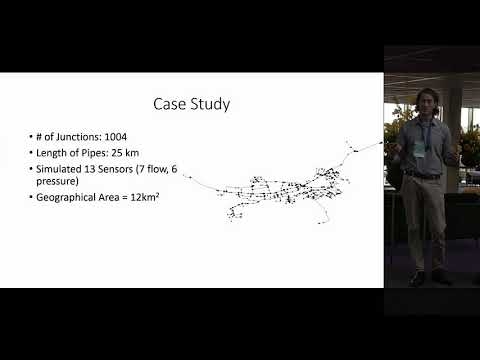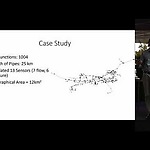This paper will present a methodology for filling the gaps of historic data requirements through the application of multiple hydraulic model simulations. These simulations develop an initial set of detection thresholds and calibration of localization model. Data from the hydraulic model simulations are then stored and used to train statistical and machine learning models. This allows the early warning system to be implemented as soon as the sensors are installed. Then, as real data is collected from the sensors, the model is recalibrated to improve anomaly detection and localization.
This work has also designed an open-use FIWARE (www.fiware.org) data model to link hydraulic modelling with real-time sensor observations, which further assists with the initial calibration of the early warning system, as well as its online implementations and data exchange with other applications. The Water Distribution Management Model provides a uniform process to store and run hydraulic models (EPANET input data format). Utilities wishing to implement this process can adopt the online Fiware data model to run and store the hydraulic model.
Overall, the methodology presented in this paper will assist other utilities as they develop their own early warning system by (1) accelerating the calibration process and (2) providing a data model that can house an EPANET model online and assist with hydraulic simulations. The methods and tools developed in this research will be crucial as more utilities develop their own early warning systems and continue to advance their digital water transition.
Source: Snider, B. (University of Exeter). 2021. Accelerating Early Warning System Implementation in Water Distribution Networks Through Hydraulic Simulations. Data-driven pathways to approach water-related disasters and challenges, Risk & Resilience. AIWW 2021.
In-person Conference
Source: YouTube - Accelerating Early Warning System Implementation

